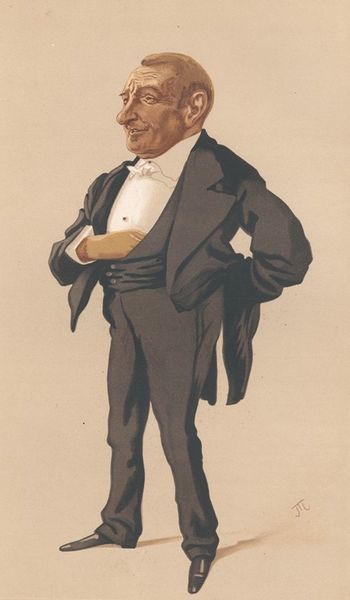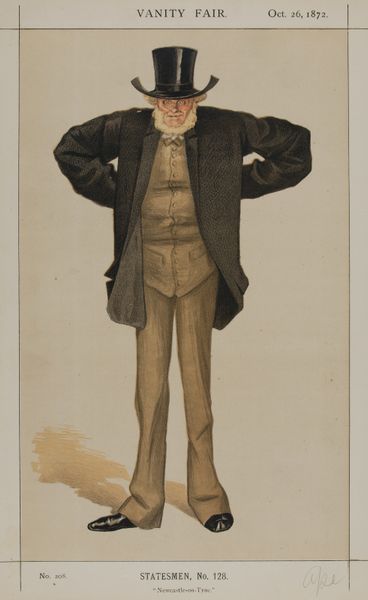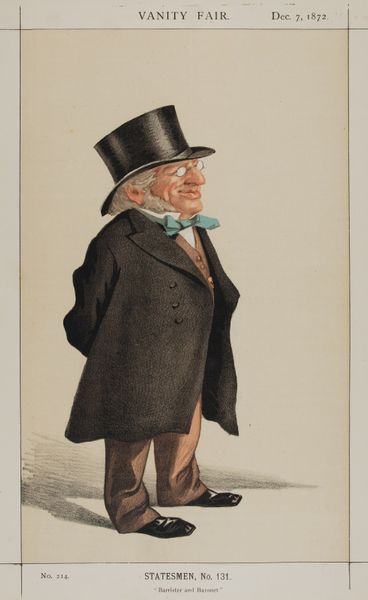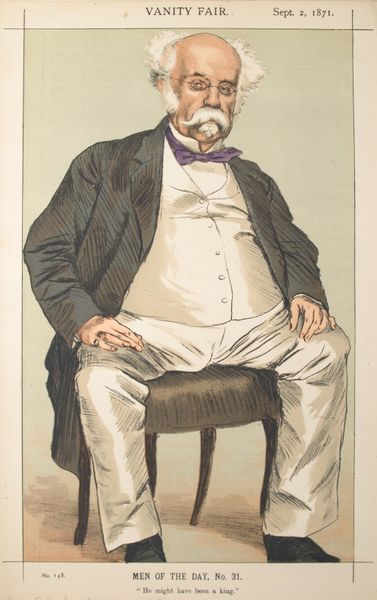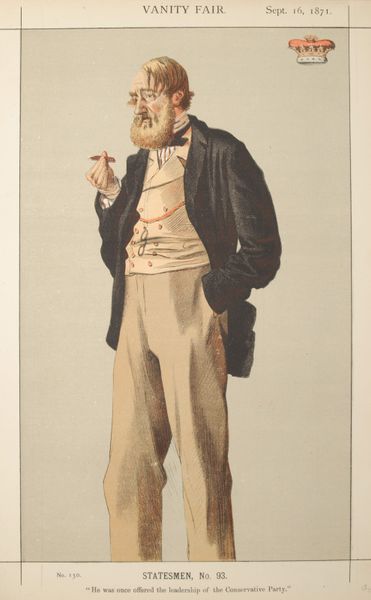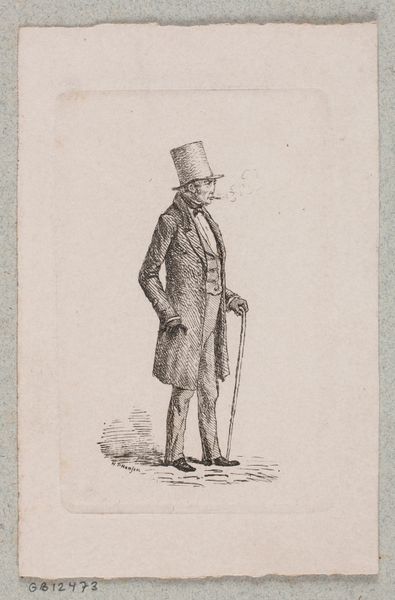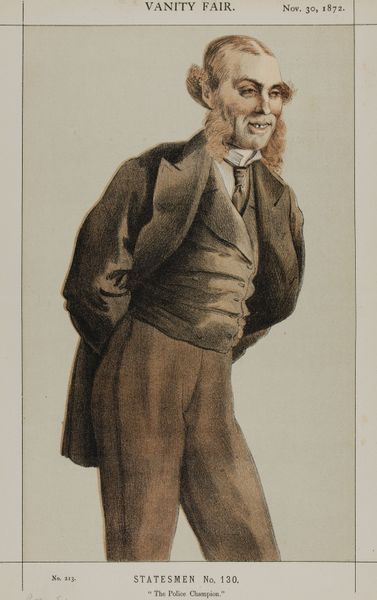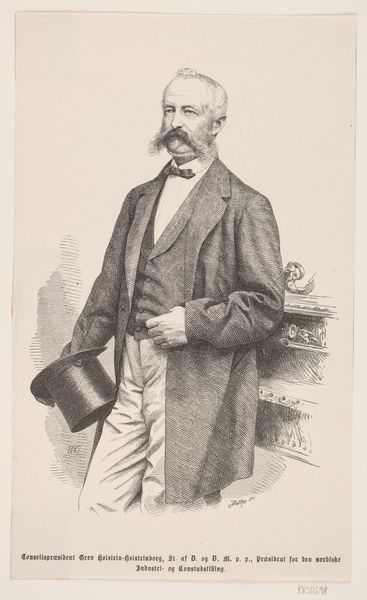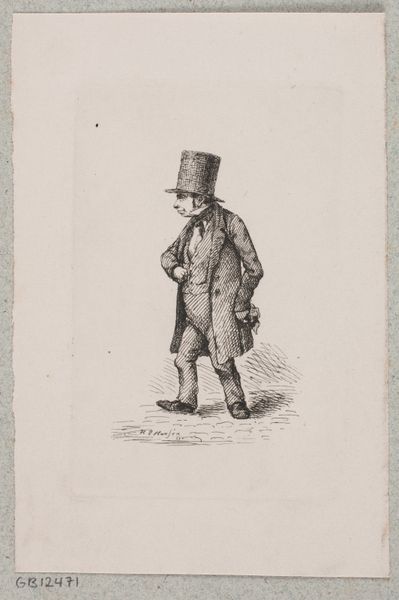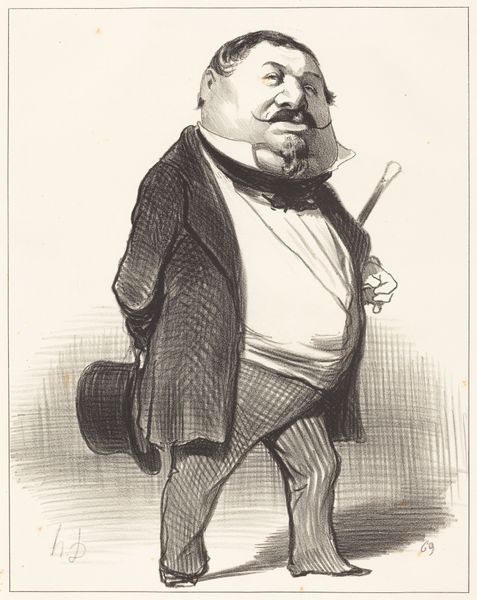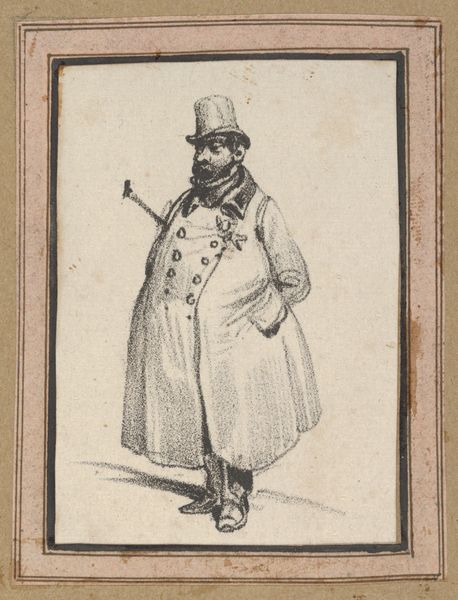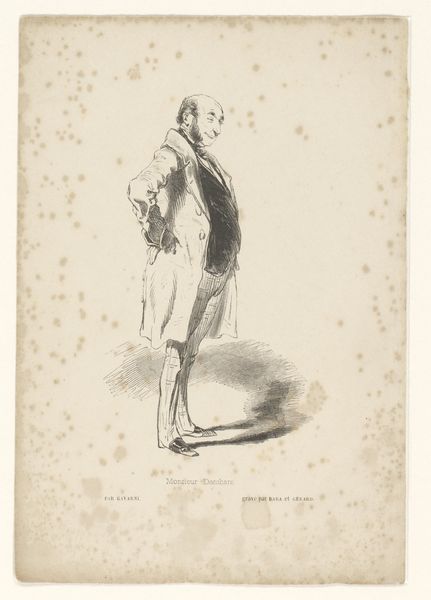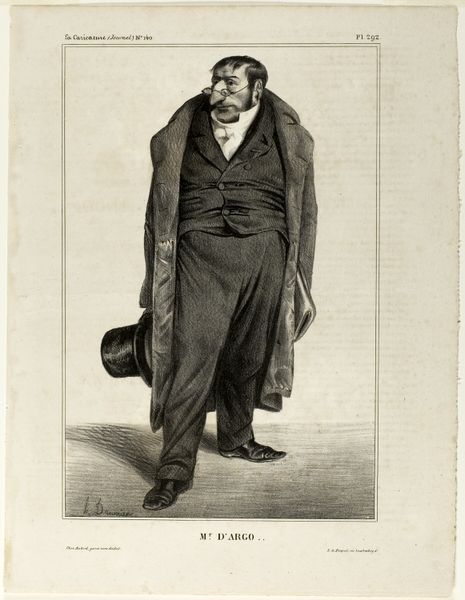
Dimensions: Sheet: 10 1/2 x 6 1/2 in. (26.7 x 16.5 cm)
Copyright: Public Domain
Curator: What a compelling image. This is Henry-Bonaventure Monnier’s 1861 drawing, "Self-Portrait as Monsieur Prudhomme," currently residing at the Metropolitan Museum of Art. It's rendered in ink, pen and print. Editor: My immediate reaction is... awkward charm. There's a definite air of self-aware caricature, a deliberate exaggeration of form that somehow loops back around to become endearing. The colors are very limited, which reinforces the drawing style itself. Curator: Exactly. Monnier's work frequently satirized the bourgeoisie of his time, holding up a mirror to their pretensions and foibles. Prudhomme was a stock character representing the epitome of middle-class complacency. Consider that within the context of 19th-century French society, being both the artist and the subject allows Monnier to critique societal norms and question conventional self-representation, very daring stuff! Editor: Agreed. From a purely structural point of view, the contrast is also so key to the success here. The rigid, almost severe lines of his coat contrast with the softer rendering of the face, drawing the viewer's eye to that point. And the tight handling of the brushstroke allows a more caricaturish feeling to the picture. Curator: It’s interesting how this “everyman” simultaneously embodies and satirizes power structures within the patriarchal, capitalist system. He's puffed up with importance, yet utterly ridiculous, reflecting a certain crisis of identity inherent in the rising bourgeoisie. He exists at the intersection of gender, class, and social expectations. Editor: Yes, and speaking purely aesthetically, the way Monnier used the technique is remarkable. Notice that with these thin lines, we don’t necessarily have the drama and complexity of a fully realized, shaded tonal palette. Curator: His self-awareness creates a distance, a critical lens through which we can re-examine the societal norms he portrays, which leads us to questions of representation. Who has the right to represent whom, and for what purpose? Editor: His gaze does meet our eyes directly. He is showing himself as he is or perhaps thinks we want to see him. Either way, it forces a silent engagement. Overall, there's a disquieting balance between criticism and a strange affection here. Curator: Absolutely, this pushes us to re-evaluate our own assumptions and biases. A testament to the work's enduring relevance. Editor: Yes, indeed. Its deceptive simplicity belies its powerful structural framework and, as you pointed out, its socio-political depth.
Comments
No comments
Be the first to comment and join the conversation on the ultimate creative platform.
